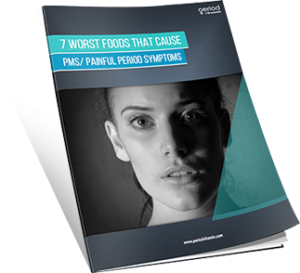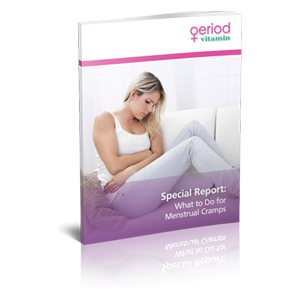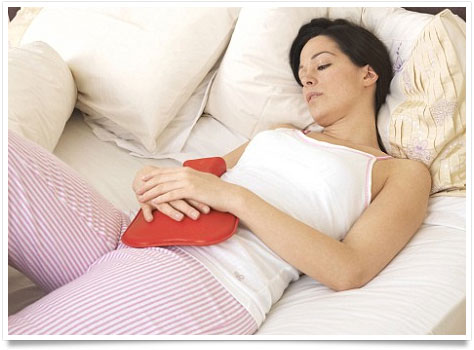 Painful periods are a fact of life for millions of women every month. What cause all that pain and what can be done about it?
Painful periods are a fact of life for millions of women every month. What cause all that pain and what can be done about it?
There are women who experience one type of pain with their period while others experience multiple sources of pain. Some of the types of pain that woman can experience during their period includes right side abdominal pain, joint pain, rectal pain and sore breasts.
Other women experience headaches and lower back pain as well as the uncomfortable feelings that g most women have this issue with pain?
Almost all the issues with pain that women experience during their cycles have their origin in the hormonal imbalance that is created in the time before a woman begins the bleeding phase of her cycle. The pain she experiences however can occur in any or all of the phases of the menstrual cycle.
That cycle looks like this:
1. Premenstrual stage (pms): This is the stage for about 2-3 weeks before a women’s period. In this period there can be a lot of headache pain. Mood Swings and depression can happen here as well.
2. Stage one follicular stage: This stage see the increase of estrogen and building up of the uterus and the lining of the uterus. Bloating begins in this stage. Ovulation ends this stage. Other symptoms like mood swings and depression can occur here.
3. Stage two luteal stage: In this stage a woman sees the increase of the hormone progesterone and lowering of the hormone estrogen. Ovulation occurs in this stage and nausea, vomiting and diarrhea are prevalent in this stage.
4. Period stage: This is the stage in which bleeding happens and the excess uterine lining, blood, eggs and fluid is discharged. The bloating ends once these are discharged. Mood swings dissipate along with panic and depression.
5. Post menstrual stage: The cycle is ended but some women experience post period pain as well.
Different types of pain can be caused by and show up in the different stages with many different reasons. Let’s look at some examples of this.
Right side abdominal pain and pelvic pain:
It is thought that this pain has to do with the right ovary swelling prior to the start of the menstrual cycle and in preparation for it. This pain tends to happen most in the premenstrual and follicular stages. This is when most swelling associated with the cycle occurs.
Joint pain:
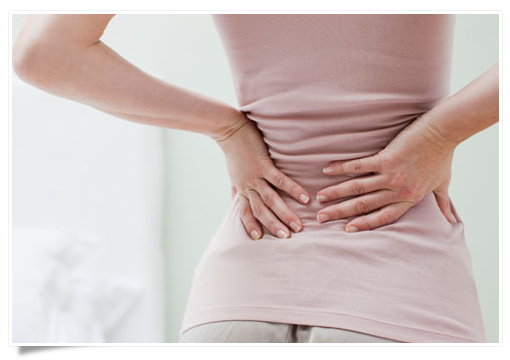 This type of period pain occurs from the premenstrual and right through the follicular and luteal stages. It is thought to be the increased amount of the hormone prostaglandin being produced by the uterus that causes increased joint pain. However there is usually a primary cause for joint pain, such as arthritis or a soft tissue disease that is then exacerbated by the prostaglandins.
This type of period pain occurs from the premenstrual and right through the follicular and luteal stages. It is thought to be the increased amount of the hormone prostaglandin being produced by the uterus that causes increased joint pain. However there is usually a primary cause for joint pain, such as arthritis or a soft tissue disease that is then exacerbated by the prostaglandins.
Rectal pain:
The follicular stage is when this pain usually begins and it can last until the end of your bleeding stage. Rectal pain can be caused by several things during this time, including a swollen uterus pressing on the rectum, the pre-existence of irritable bowel syndrome or endometriosis.
Sore breasts:
This happens in the premenstrual and during the period stage. The production of estrogen causes this swelling as estrogen is the hormone that creates breast tissue.
Headaches and migraines:
Although many women suffer with severe or migraine headaches at any stage of the cycle. However headaches are certainly more prevalent in the premenstrual and follicular stages.
Lower back pain:
Premenstrual lower back pain is very common however it can continue right through all the stages until the period is complete.
Severe cramps:
The bloating, the hormonal imbalance and increased amount of estrogen in the premenstrual and follicular stages are responsible for this most common type of painful period.
REMEDIES AND TREATMENTS:
Pain Medications: All of these painful conditions can be treated with medications, though some will respond better than others. There are both over the counter and prescription medications to consider.

• Over the counter (OTC)
Pamprin: This is a traditional PMS/menstrual cycle medication sold over the counter. It contains acetaminophen, a diuretic and a small dose of NSAID – nonsteroidal anti-inflammatory drug. Some women feel Pamprin makes them tired and they only take it at night.
Midol: This is an even older more traditional menstrual cycle medication sold over the counter. Midol contains caffeine, acetaminophen and a diuretic. Many women like the pick me up that caffeine has but only during the day and not at night.
NSAIDS: Non-steroidal anti-inflammatory drugs OTC are non-prescription strength doses of the same medications you might get from a doctor. This includes Advil, Motrin, and generics like Ibuprofen.
• Prescription
Birth control: For a very long time physicians have believed that oral birth control could alleviate menstrual pain. They have proven this anecdotally over the years but now there are scientific studies out of Sweden that show while a woman is on birth control there is no sign of period pain. “The research included about 1,400 women living in the Swedish city of Gothenberg who were born in 1962, 1972 or 1982.
Researchers surveyed the women first at age 19, then again at 24, with questionnaires about their period pain, use of various types of contraception, whether or not they’d had children, and their height and weight. Only women taking combined oral contraceptives, which contain both estrogen and progestin, were included — not those taking progestin-only pills.
The study found that use of birth-control pills cut women’s pain significantly, reducing it on average one step on a scale of pain — for example, going from severe to moderate — for 1 in 3 women. Women on the pill also needed less pain medication during their periods.” (The study was led by Dr. Ingela Lindh of Gothenberg University and was published in Human Reproduction.) Women took the pills every two weeks and allowed their cycle to commence in between.
Analgesics: These are prescription pain killers other than NSAIDS. They might include narcotic and non-narcotics such as Lortab or Tramadol. Physicians will prescribe stronger pain medication for severe and consistent case or painful periods. A lot of women might not be able to take these medications during the day as many of them are known to cause drowsiness.
Muscle relaxers: Also a prescription medication thing like cyclobenzaprine and baclofen will relieve cramping and back pain as it relieves the contractions and spasms of the uterus and muscles.
NSAIDS: Prescription strength non-steroidal anti-inflammatory drugs include Motrin, Naprosyn, Ibuprofen, Relefen, and others. These are probably the most commonly prescribe class of drugs for painful periods.
Herbal and Home Remedies:
Dong quai is one of the most used herbs for menstrual pain. This root is also used for joint pain and it works by effecting the production and life span of estrogen. This root is made into a tea for menstrual pain. It relaxes the uterus and relieves cramping. One caveat – many doctors feel that more research is needed regarding long term side effect s of dong quai.
Don’t use it in conjunction with other herbs that slow down the process of clotting the blood.
Raspberry Leaf Tea is another herb used for painful periods. It also relaxes the uterus and relieves cramps.
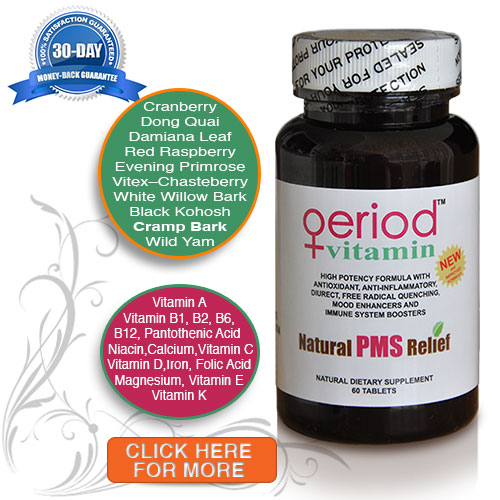 Ginger is the miracle herb as it can be effective in so many ways for so many different symptoms. It has the properties to lower the amount of prostaglandins in the blood stream.
Ginger is the miracle herb as it can be effective in so many ways for so many different symptoms. It has the properties to lower the amount of prostaglandins in the blood stream.
“In a 2009 study, women who took 250 mg capsules of ginger four times a day for three days from the start of their menstrual period experienced a level of pain relief equal to that of study members who treated their menstrual cramps with ibuprofen.” (Journal of Reproductive Medicine 2008 53(5):338-46.)
Pycnogenol is made from pine bark and it can reduce pain and help to alleviate the need for pharmaceutical pain medications.
Chasteberry: This herb is specifically effective for headaches and sore breasts that can occur during a woman’s cycle.
Magnesium: A deficiency of magnesium can cause pms and other symptoms during the menstrual cycle.
Vitamins and Supplements:
• Vitamin D: Reduce inflammation and therefore reduces pain.
• Vitamin B Complex: Reduces fatigue, moodiness, and anxiety and these emotional highs and lows can aggravate pain levels.
• “Period Vitamin” : Vitamin D, Black Cohosh, Vitamin B1 and B2 in a new compound to deal with all kinds of pain from menstrual cycles.
• Vitamin E: Recent studies show this helps reduce cramping.
• Calcium: Several studies have been done with calcium and all of them have shown a positive result during menstrual cycle. It reduces tiredness, depression, appetite suppression, and pain.
Other Activities:
Yoga positions: The use of yoga during the premenstrual and follicular stage assists in relaxation and exercise and counteracts the pain in these stages which could be cramping, headache, and/or breast pain.
Exercise: Exercise certainly reduces/prevents or eliminates any pain in any stage of the menstrual cycle.
Foods: Fish oils and Krill oils can help with pain and inflammation but more so with cramping.


